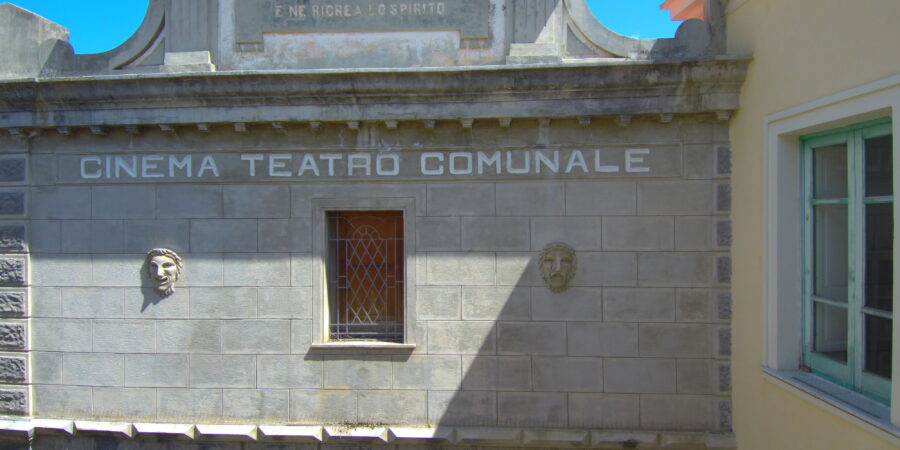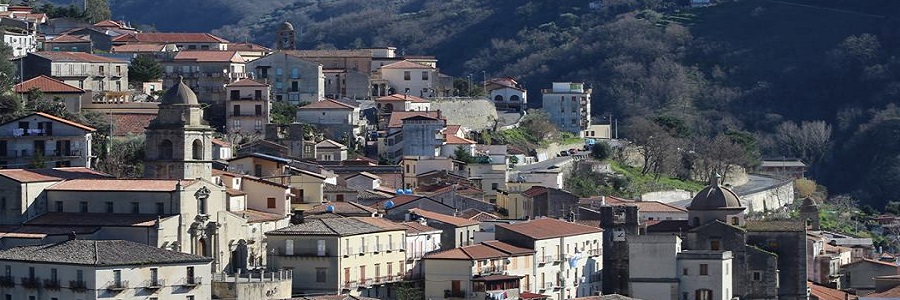Teatro Comunale

🇮🇹 Il teatro comunale venne costruito nel 1901 sui resti della chiesa di Santa Chiara, che sorgeva accanto all’omonimo convento risalente al 1640.
A disporre la costruzione del convento delle clarisse fu Blasco Natoli, il quale, nelle sue volontà testamentarie, espresse il desiderio che le proprie spoglie venissero seppellite all’interno della chiesa di Santa Chiara.
Blasco, inoltre, dispose che venissero collocati sull’altare maggiore una statua in marmo e un quadro dell‘Annunziata.
Con la costruzione del teatro rimase ben poco dell’originaria struttura seicentesca. L’edificio conserva ancora un soffitto a cassettoni scolpito in legno. Il coro e i palchi in legno lavorato, che un tempo cingevano la platea del teatro, sono stati sostituiti da palchetti in cemento.
Sulla parte frontale appare la scritta L’arte plasma l’anima del popolo e ne ricrea lo spirito.
Dell’ex convento di Santa Chiara, invece, rimangono il portale di ingresso, gli stipiti in pietra arenaria e l’architrave su cui è scolpito lo stemma francescano.
Nell’atrio è situato il busto dell’illustre santangiolese Emanuele Basile, scolpito da Gabriele Merenda. La moglie del senatore, Teresa Basile, fu la fondatrice dell’asilo di infanzia, ubicato nel monastero prima che venisse adibito a Palazzo della cultura.
FONTI:
Nicola Fazio – Terra di S.Angelo (ed. Pungitopo)
Achille Caldarera – S.Angelo (Cenno Storico)
Daniele Tranchida – Sotto il Mantello dell’Abbazia
Basilio Segreto – Archivio Storico Santangiolese
🇬🇧 The municipal theatre was built in 1901 on the ruins of the church of St. Chiara that once stood beside the homonymous convent dating back to 1640.
The construction of the convent of the Poor Clares was ordered by Blasco Natoli who, for his last will and testament, expressed the wish for his remains to be buried in the church of St. Chiara.
Additionally, Sir Blasco requested a marble statue and a painting of the Annunciation to be placed on the high altar.
Following the construction of the theatre, very little remained of the original 17th-century structure. The building still preserves a wooden coffered ceiling. The choir and the loges in handcrafted wood that once surrounded the theatre stalls had been replaced by concrete loges.
On the façade of the building appears the writing “L’arte plasma l’anima del popolo e ne ricrea lo spirito” (Art shapes the soul of the people and lifts their spirit).
Of the former convent of St. Chiara remain instead the entrance portal, the sandstone jambs and architrave on which is carved the Franciscan coat of arms.
In the atrium stands out the bust of the illustrious Emanuele Basile from Sant’Angelo, sculpted by Gabriele Merenda. The senator’s wife, Teresa Basile, was the founder of the kindergarten that was located in the monastery until it was converted into the Palace of Culture.
Traduzione a cura di Maria Diletta Fazio, Francesca Cortolillo e Alessia Bertolone


